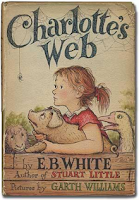In this post, we’re delving into the depths of the London scene portrayed by William Blake, the renowned 18th-century British romantic poet. His evocative poem, “London”, paints a stark picture of urban life at the onset of the Industrial Revolution, a time when the agrarian society was fading into history, making way for the hustle and bustle of city life.
Blake’s poem is a potent social critique, where the language is economical, yet the power of his word choice is profound. He makes use of repeated phrases and words, drawing attention to the dichotomy of city life and nature, the man-made versus the natural, the stark reality versus the fairy tale expectation.
“London” is not a mere depiction of city life. Rather, it presents a narrator wandering through its streets, observing and internalizing the miseries of humanity he encounters. There’s an aura of loneliness and unhappiness, a sense of disconnect despite being surrounded by others, which resonates with anyone who has ever experienced the anonymity of urban life.
Blake’s narrator points to the marks of weakness and exhaustion on the faces of those coming from factories, critiquing the exploitative labor conditions of the time. The poet also highlights societal apathy towards the suffering of young chimney sweepers, a tragic reminder of the city’s dark secrets. The chimney sweepers, who were often children, worked in deplorable conditions, their plight remaining unnoticed or ignored by the very society that benefitted from their labor.
Blake doesn’t hold back in his critique of institutional indifference. The Church and the State, he argues, are indifferent to human suffering and injustice. The poem illustrates the plight of soldiers shedding blood for the interests of the state and the harlots who were often inflicted with diseases, only to pass them onto their customers who would unknowingly bring them back home.
The poem doesn’t offer a solution. Instead, it acts as a protest, crying out against societal ills and apathy. Blake presents a vivid picture of a society manacled by its own despair, bound by the chains of its inaction. By voicing out these atrocities, the poet forces us to confront our own complacency and challenges us to question what we would do in the face of such human misery.
Blake, who was also a skilled printmaker, often supplemented his poems with visual imagery. For “London”, he illustrates a young boy leading an old man and a child warming up by a fire, which further highlights the pervasiveness of suffering in the city.
In essence, Blake’s “London” is not just a depiction of city life, but a thought-provoking critique of society and a plea for empathy and action. Although it doesn’t end on a note of hope, it prompts us to reflect on our role in society and to consider how we can alleviate the suffering around us.
Hey, Teachers!
Teach the poem "London" to students in middle and high school with a jam-packed teacher resource on William Blake's London and the Industrial Revolution.
























